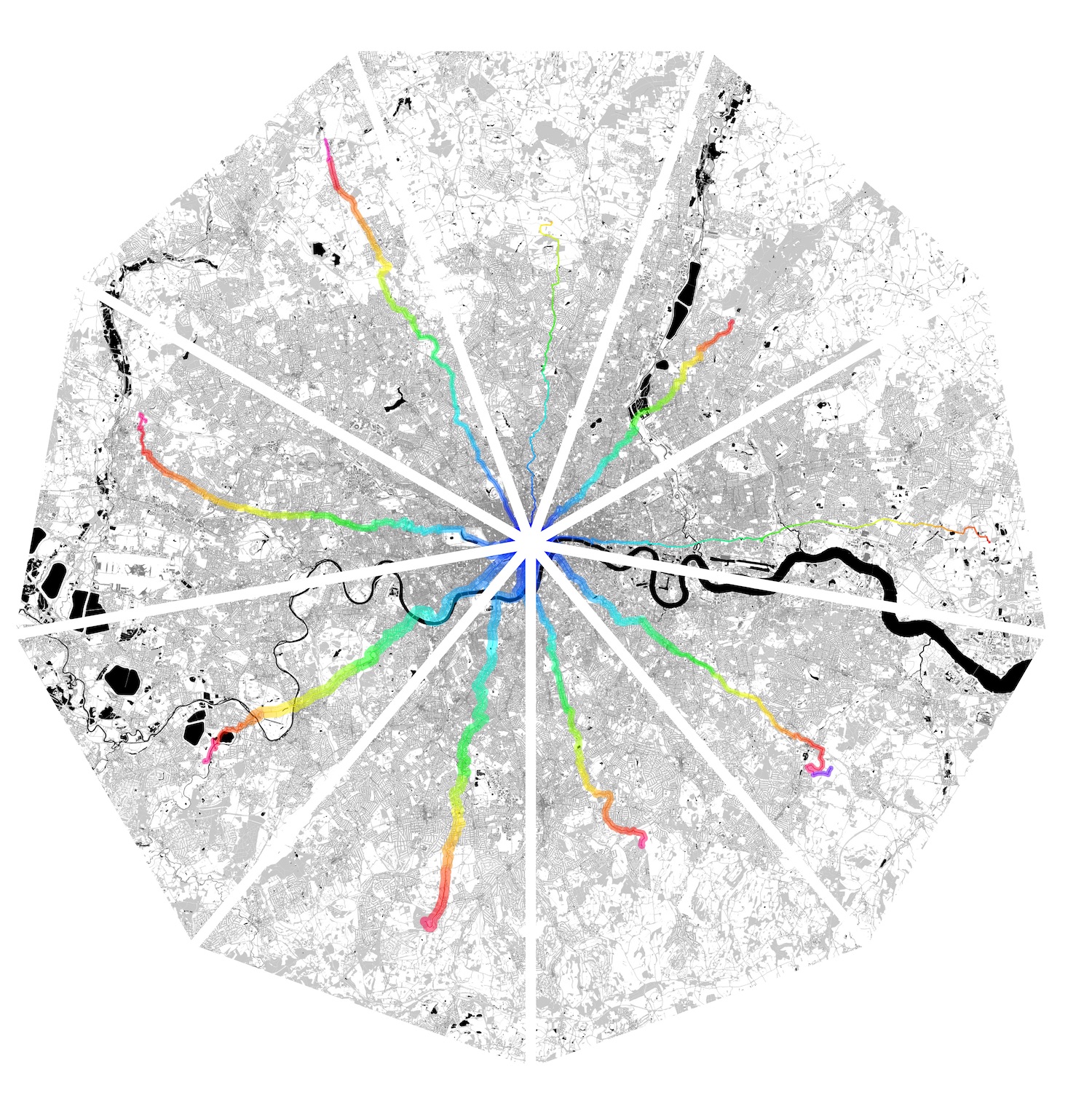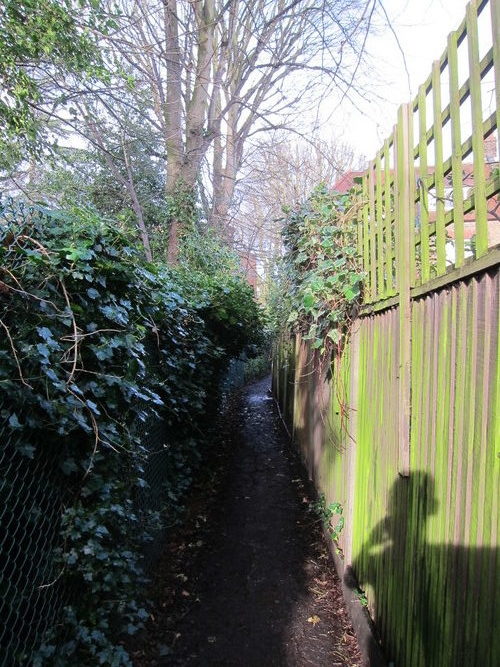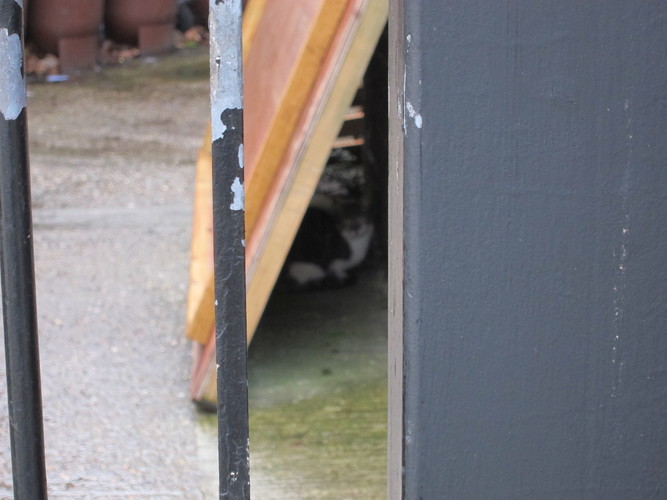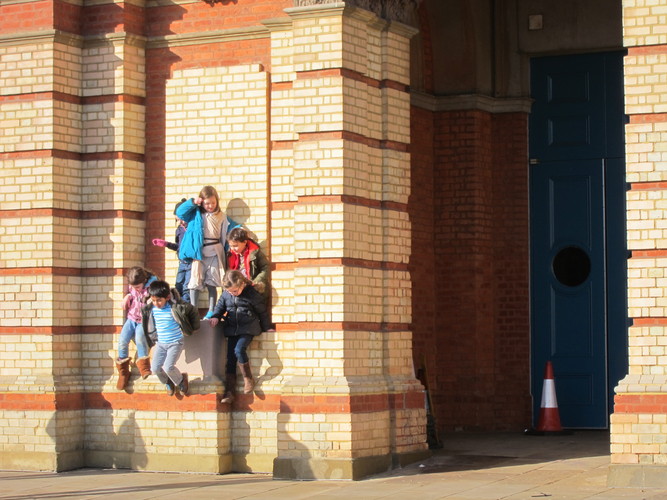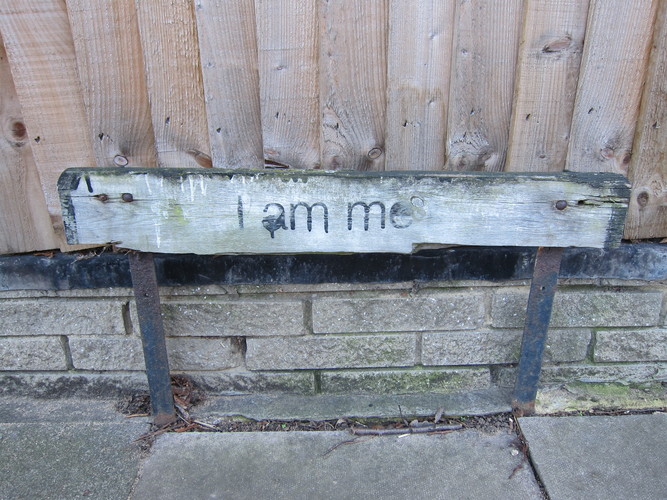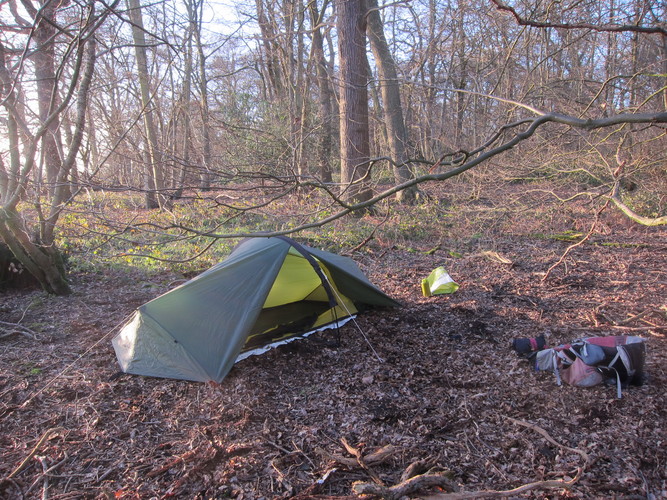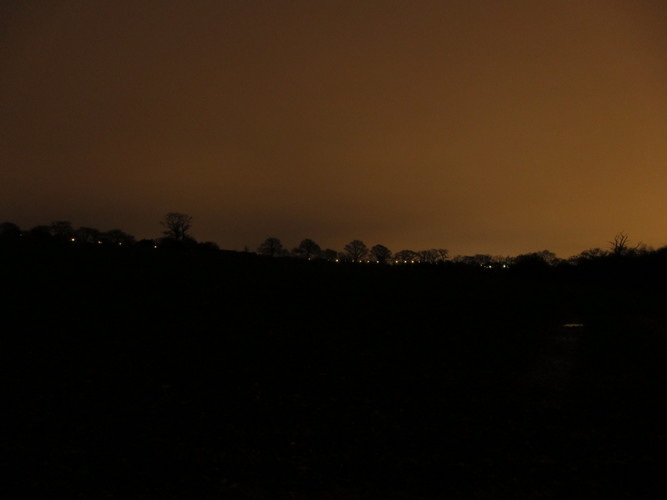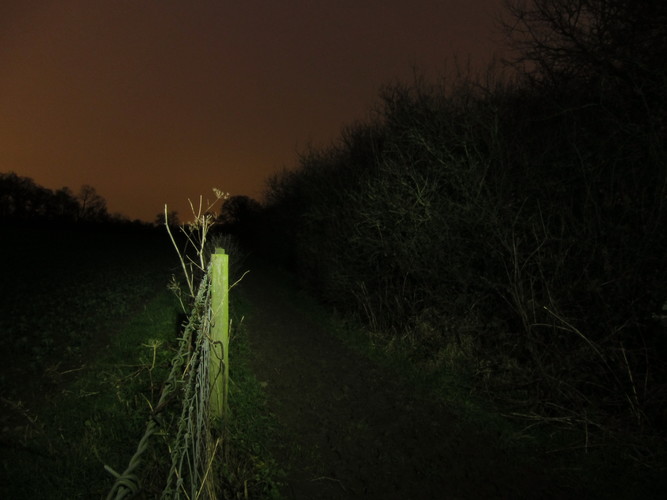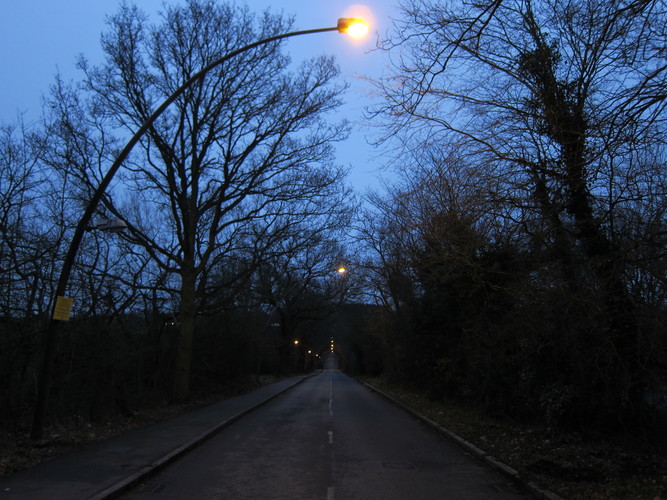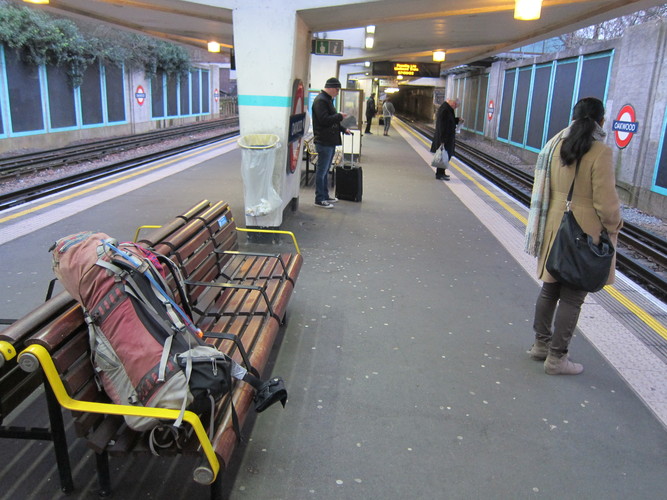I was five minutes late to my own walk, having stopped for coffee and croissants for motivation, one reserved for later that morning. The weather looked grim. Dark clouds loomed due North, the direction in which I was heading. Nevertheless, it was nice to be out for a solo adventure. I’d only told a few people, and none could, or wanted, to join.
Just after 9am I walked north from Charing Cross. The centre of London was grey and commercial. For the first 15 minutes I was convinced that my compass magnet had lost its magnetism from neglect over the years. I’d taken it on trips religiously, but hadn’t needed to use it for a decade. Pausing at tourist information maps on boards planted in the pavement whenever I could, I verified my bearings in consultation with their North arrow. Although its bearing remained in agreement with the maps, I made a note to myself to charge the compass magnet.
A film crew gathered outside the British Museum. Russell Square was damp, wet, and full of students. Along a long, central London road I passed an Age Concern office with posters of elderly people with quotes about how to live well. Probably a good thing to give heed to. I passed a few tea rooms as I approached Euston. Onward, and I walked past a pub with a graffitied hare on the wall overlooking its beer garden.
A small patch of sky opened ahead. Crossing the Pentonville road, my ongoing bearing anxiety prompted me to doubt the compass, though I knew it counter-productive. I overcompensated, stubbornly mis-trusting the bearing. The wind chilled my arms as I skirted to west of a large building under construction. Bare cherry trees stood in a park. Two elderly men walked together with trollies. I received suspicious looks from a passer-by.
In contrast to my arms, my legs were warming up, and I thought of comfort and food; desire for a coffeeshop, coffee, a warm room, and breakfast; desire for a slow Saturday. But not today, and there would be no comfort until the next morning. I questioned whether it was a really a good use of my time.
A shortcut through St Pancras Old Church led across a grassy, tended graveyard. It wasn’t obvious at the outset, but my doubts as to whether it was the best route were unfounded. Out into the road on the other side of the graveyard where I emerged to views of gas towers transitioning into apartments. Wet tarmac and grey skies. Many security cameras.
Under a yew tree, the pavement was slippery with bird droppings; I didn’t slip. I took a tempting stairway down onto the canal, heading north, knowing full-well that I was slipping west, but it looked too fun. The canal towpath hosted pained-looking joggers. A narrowboat called “Dream-catcher” was moored in the dark under a bridge, covered in more bird poo.
Soon I was back into the streets, and walking past soggy discarded furniture. The streets shifted to become longer avenues of larger homes. I was on a straight path, due north, for a while. People walking dogs; an attractive teenage couple strolled past. It was grey and grim, with ravens in the parks. A car alarm oscillated across deserted streets, but the occasional passers-by had well-to-do accents. The woman in her late middle-age walking a small dog seemed wary of me; my projection, a bearded man with a backpack, passing through her neighbourhood.
Despite a speck of blue sky, a cold breeze blew as I crossed Camden Park road. A man stood smoking outside his flat. I slipped down Joshua Lane, an irresistible alleyway, which sadly led only into a modern housing estate. I caught sight of a structure on the horizon which I suspected was Alexandra Palace, which I knew I should pass. I tentatively used the building for bearings. Passing into another side street, the newer housing was replaced with older, larger, suburban houses. I wondered if my compass passed for a mobile phone. I was in Tufnell Park, passing through an artisanal farmer’s market, selling candles and cheese. I found a toilet in the playing fields behind the market, feeling like a vagabond, a misfit. Or a wannabe vagabond. It wasn’t as fun as I’d thought it would be.
The streets guided me, and they, in turn, were guided by felt railway tracks on my left. I had no choice. There were no control experiments to evaluate my choices by. The road looped me back again. Mothers walking pushchairs smiled at me as I photographed the primary school sign. At the end of the road I was still trying to find my way over the intuitively felt railway tracks, passing into a small park. It was Saturday morning football practice for young kids. I couldn’t imagine anything worse until I saw a solitary man drinking from a can of cider. It was 11am.
On the corner of a busy road I passed a pub called ‘Spoke’, with a cycling theme. Spots of rain began to fall. Finally I found a footbridge over the railway line. It began to rain in earnest, and a bitterly cold wind blew, despite sunny spells.
Crossing a street, a passing woman sneezed. I said ‘bless you’. I crossed a sunken green footpath on a footbridge; the footpath, an abandoned railway line stretching from Finsbury Park. A man in an orange top walked a dog, intersecting my path, beneath my bridge.
I emerged into Crouch End, an amalgam of boutiques and chain shops, the sky blue. I thought to myself how much I’d have loved another coffee and croissant as I passed down the high street. Onward; the scenery a mix of terraced houses, soggy furniture in the sunshine, and young families with hip-looking fathers grasping at their youth.
The path out of Crouch End was a long, straight road heading due north. Toward the end I entered Priory Park, which was pleasant and wintery. More people were at football practice, on asphalt this time. Finally, I unambiguously sighted Alexandra Palace, surprisingly close, and promised myself my stored croissant at the top. Although the route wasn’t clear, I soon clambered up the hill toward Alexandra Palace. It remained sunny and cold.
It was midday when I reached the plaza in front of Alexandra Palace. The weather was glorious, with clouds back over central London. I climbed inelegantly onto a statue plinth, a perch for lunch with a view, inspired by a pack of children on the corresponding symmetrical plinth. I promptly dropped my croissant napkin, dictating that I jump back down to grab it before clambering back up for my lunch. It was bright sunshine. I probably should have been wearing sunblock, but hadn’t packed any.
I was enjoying walking outwards from the centre of the city. The tail end of the adventure was the highlight, the apogee, and not a homecoming. It was exciting to be moving outwards, evoking the unknown. Positive, optimistic, futures; not pre-ordained, set. I ate half of one of my containers of bean soup.
The sun felt great; my body felt great. It was nice to sit for half an hour. An expanse of blue sky lay ahead, over views down to Finsbury Park. I watched a plane coming in over North London, looping around to Heathrow. Canary Wharf, the City, and Bloomsbury tower were clear. Using the compass I could make out my path from central London, over the hills.
At 12:30pm it was time to move on. I found the boating lake toilets behind Alexandra Palace, then moved onwards, northwards, into blue sky. I was still yearning for another coffee, a distraction from the mild exertion and uncertainty ahead. As I left the grounds I walked past a woman as she dropped the cleaning cloth for her glasses. I pointed it out to her and she grunted a thank you, pleasantly, and walked back to pick it up. Then I was out of the park and into the roads of suburban London.
The landscape was distinctly suburban, with few pedestrians. The houses were larger, spaced more generously, and there were more cars. A woman sat in her parked car, intently analysing a lottery ticket. At the junction to a road bearing due north I found a mini book library, a hutch on a pedestal with books either to add to, or take from. Then I walked on past a shop where I’d bought a snack during a previous walk, and walked on over a wiggly modern footbridge crossing a main road. The stairs for the footbridge were closed, though it wasn’t clear why. On the other side of the bridge was a white 1920’s suburbia; families and cars. Soon after, I tracked up a hill, the fields of suburbia becoming more village-y. Two kids walked across a pleasant green space that evoked the commons and parks of small English towns.
I reached Southgate Station, and started on a long, straight north-facing road that descended into a hollow, then up the other side. The sky was blue and double-decker buses rolled past, incongruous with the outer suburbs. I turned into a side-street and was happy to find a sign stating “I am me”, a sentiment that I appreciated. Morning merged into afternoon.
The suburbs were thinning as I reached Oakwood park and a boulevard of poplars. An exercise bike posed in a window. Suddenly, the edge of London came: A T-junction at a road dividing the suburbs from fields, soon after South Lodge Crescent,
What the exit from London would look like hadn’t been clear to me, so I was surprised to find a footpath immediately over the road. I stopped to pee in a bush. Looking up, a fox crossed a sunny field. It seemed like open fields from there on out—an unexpectedly quick and easy to get out of London. The path was muddy and led down into the shallow bottom of a valley, where it was deflected and ascended again, a green tunnel heading on, straight, forever. Despite mossy old tyres in a ditch and piles of litter, it was wonderful path, a trajectory at escape velocity over the fields, like Pigling Bland, over the hills and far away. Onward to Scotland.
The terrain became a groomed wood that would have made a perfect campsite if it hadn’t been so early. The path, too, became a well-used two-lane track, and it quickly became evident that I was in a destination for locals and Londoners to walk. The track veered left to run parallel with a main road. Soon an opportunity came to take a path ducking out of the wood onto the road, but there were no clear footpaths on the other side, so I returned into the wood. A signpost told me I was in Trent Country Park.
Another exit onto the road came, which I took, crossing, and continued down a small private road in an attempt to find a footpath. I was immediately overtaken by a car. The driver shouted, “Excuse me! This is private land!”. She returned to retrieve her husband from the cottage nearby; he emerged, limping, and told me to go back, that I had to return to the main road and continue in the direction I had been heading. A few hundred yards down the road I would find a footpath, the London loop. Checkmate. I reluctantly returned to the road.
It was around 3pm and I found myself walking along the busy road, skipping up onto the high, narrow verges whenever a car rolled past; no fun at all. The ongoing traffic was zipped past, often forcing me to walk along the ridge of the verge with little opportunity to walk on the road itself.
After five long minutes, the London Loop, the orbital footpath around London, intersected the road. It was hard to decipher which direction to take, as I knew the path circumnavigated London, and I wanted escape velocity, not orbit. But it was my only option. One direction, at least headed North, so I opted for that, leading down into a shallow valley. It was muddy, but mainly sunny.
At the bottom of the valley the path turned and became muddier as it shadowed a hedge-lined stream. The mud was miserable, although I was glad of the sun on the fields sloping up the side of the valley. At the end of the field I found an abandoned tent, backpack, and sleeping pad. Seemingly abandoned for a long time, crumpled and dirty. Why would anyone abandon their entire camp: an eerie, canvas, land-bound Marie Celeste?
Three fields worth of trudging through mud led to darker and darker thoughts, and I decided it was time to find a campsite. I could see a wood just one field away, over the stream on the other side of the valley, and I decided to check it out. I was far enough outside of London to not have major anxieties about drunken locals making forays into the local woods. The path crossed the stream on a bridge; I left my footpath, which continued along the stream, to walk perpendicularly up a hedgerow, crossing a smaller stream.
The wood lacked a clear entrance. Indeed, it looked pristine, with no paths or gates, sparsely wooded, and appealing. I clambered through a hedge to cross the stream over a fallen tree trunk. I was grateful not to fall off the trunk. The wood had no litter, no paths, and lovely flat clearings. By 4pm I had my tent was up and was happier than when I was slogging through the mud half an hour earlier. To keep weight down, I hadn’t brought a stove, so it was just my second tub of cold bean soup for dinner.
A few minutes later, gunshots broke from the wood on the far side of the valley. More followed sporadically over the next ten minutes. I hoped they wouldn’t walk over and find me. Or shoot me accidentally. After stretching I decided it was time to get into my tent, wrap up, and have some bean soup, which I followed with some trail mix. I took some photos in the dusk as the lights of the top decks of double-decker buses ran on a road above the wood; a road farther out than I was, despite my belief that I was already far beyond London.
I spent the evening reading Tove Jannson’s “Comet in Moominland”. I’d been meaning to return to her children’s sagas for years, and this was a perfect setting to remind myself of their exuberant anarchy. Owls hooted in the background and sirens wailed in the distance. Later, the roar of the M25 became apparent as I listened to the night. By 8pm I’d finished the book. Fantastic. I turned off my headlamp to sleep.
I slept for ten hours and woke feeling good. I’d woken just once in the night, but had fallen asleep again immediately. Hoping to get back to civilization before the rain began, I packed up, took a few photos, and headed back in the dark the way I had come, eating handfuls of trail mix, headlamp on. I successfully negotiated the fallen tree trunk over the stream, and headed back down to the muddy path, crossed the stream on the bridge at the bottom of the valley, and embarked back along the muddy valley path. It started to spot with rain, and the path remained relentlessly, depressingly, muddy in the dark, though was much easier than it was the previous afternoon. It was actually much shorter than I’d remembered, just two muddy fields. It had felt like much longer on the way in. By 7am it was dawn, and it was sufficiently light to turn off my headlamp.
I crossed the main road and re-entered Trent Country Park on a well-maintained track. I followed my intuition as to the best direction back to London, consulting neither compass nor phone. I had left London near Oakwood station, the penultimate station on the Piccadilly line, but I was sure that the final station, Cockfosters, was nearer. The path to my campsite was winding and I thought I could get to Cockfosters more directly on this inbound walk. I looked out for a southbound trail heading the direction I wanted to be heading in. After a few minutes a southerly side-track branched off from the main trail, but soon petered out, pushing me to return to my original path. The groomed woodland through which I walked had a sadness: a tameness, a de-fanging.
Soon, another side track materialized, a single track, bigger, flatter, better used. It was muddy. After a few minutes I emerged onto what was probably the track I had just left. By now, though, the track was gravelled, and easy walking, descending into the valley and what was possibly Oakwood. The track emerged into a large clearing. Despite the tameness, it could have been rural Oregon, with no hint that London was just over the horizon. Nevertheless, in the centre of the clearing was a signpost to Oakwood tube station. Its suggestion led past a waterfall between ponds, and up a slope through groomed woodland to a cluster of old park service buildings.
Soon I heard the high-pitched whistle of the tube in the distance. The park opened into tree-lined avenues, and a large campus-like enclosure. There were cages for rescued animals, and paved roads. I found the road out of Trent Park. The road had old streetlights, and I found myself gravitating toward walking in the middle of the road after a night in a wood. In the normal context of London I would never spontaneously start walking in the middle of the road. Three cars drove past me suddenly. I wondered if the park had just opened, letting in the first visitors. Next, a runner. I stood aside; he thanked me. Definite sounds of the tube; pheasants cawing in the field, the English winter. Two men walked past. They didn’t look at me. I prompted them with a ‘good morning’, to some muffled response. Nearer, I could make out the sounds of tube trains slowing down. The sound evoked echoes of suburbia; my youth; my childhood visiting London. Soon, I spotted the tube sign through the trees; a light drizzle began to fall. Soon, I was home.
